Solar Eclipses
Have you ever experienced a total solar eclipse? The Moon appears as a dark disk that slips in front of the Sun, blocking the Sun entirely from view for just a few minutes. The sky darkens as if the Sun is about to set, even though it may be the wrong time of day for sunset. The air feels a bit cooler because sunlight is blocked. You might notice a hush among insects and birds that are usually active during the day, temporarily tricked into thinking that nightfall is approaching, or even a bustle of activity among animals confused by the sudden darkness. A solar eclipse is an exciting event to experience, should you happen to be in the right place at just the right time.
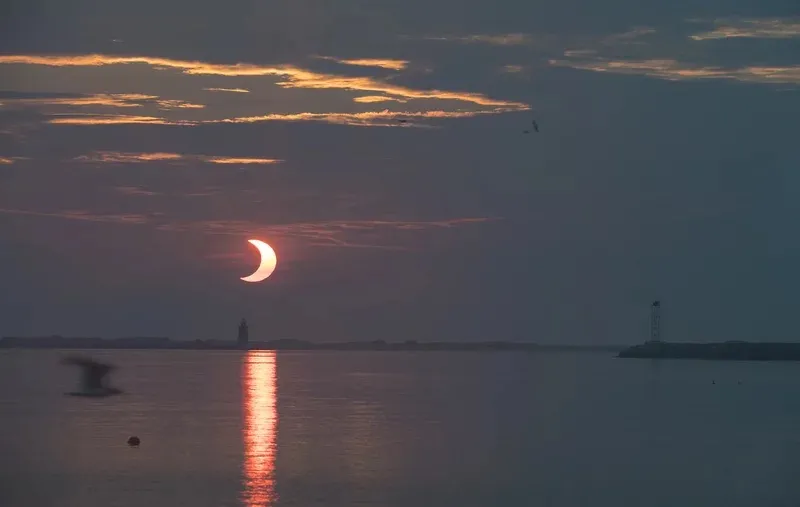
During this partial solar eclipse (2021), the Moon covered only a portion of the Sun, making it appear crescent-shaped. A partial eclipse occurs when the Moon is not perfectly aligned with the Sun and the Earth.
Aubrey Gemignani/NASA via Getty Images
What Causes a Solar Eclipse?
A solar eclipse occurs when the Moon is perfectly aligned between the Sun and the Earth, creating a shadow on the Earth's surface. The Moon's shadow sweeps across the surface quickly as the Moon orbits the Earth, temporarily blocking our view of the Sun.
The Moon is about 400 times smaller than the Sun and through a cosmic coincidence also about 400 times closer to the Earth. This makes the Sun and Moon appear almost the same size in the sky, allowing the Moon to completely cover the Sun during a solar eclipse.
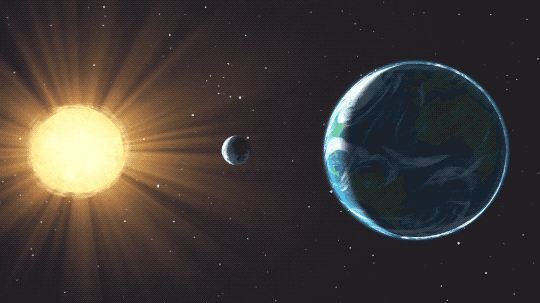
During a solar eclipse, the Moon casts a shadow on the Earth. From within the darkest part of the shadow, called the umbra, you will see a total eclipse. From within the lighter part of the shadow, called the penumbra, you will only see a partial eclipse.
NASA/Katy Mersmann
A solar eclipse can only be viewed from the sunny side of the Earth and only from locations where the Moon’s shadow falls on the Earth. You’ll see a total eclipse if you are right in the middle of the Moon’s shadow. If you are closer to the edges of the Moon’s shadow, you’ll see a partial eclipse. And if you are outside the Moon’s shadow you won’t see any eclipse.
The eclipse path falls on the same location only once every 375 years or so. Because the movements of the Moon and Earth are precisely known, the dates, times, locations, and other characteristics of future solar eclipses are predictable. Check out NASA’s solar eclipse paths website to learn about upcoming solar eclipses.
Types of Solar Eclipses
The type of solar eclipse depends on where the Moon is in its orbit around the Earth and on the about five-degree tilt to the angle of the Moon’s orbit. The exact positioning of the Moon between the Sun and Earth depends on these two factors and determines whether a total, annular, or hybrid eclipse will occur.
Total Solar Eclipse
The Moon completely covers the Sun during a total solar eclipse. The few minutes where the Sun is completely blocked from view is called totality. During a total solar eclipse the Sun’s outer atmosphere, called the corona, is visible from behind the edges of the Moon. Normally, the brightness of the Sun’s surface blocks our view of the corona, so a total solar eclipse offers a unique opportunity to observe the corona without the aid of specialized telescopes.
A total solar eclipse can be seen someplace on Earth only about once every year and a half. It’s rare to see a total solar eclipse because the shadow cast by the Moon is not very wide - ranging from about 20-320 miles (31-520 km). If you happen to be just outside the path of totality, you will see a partial solar eclipse. A partial solar eclipse is a bit more common, happening twice per year.
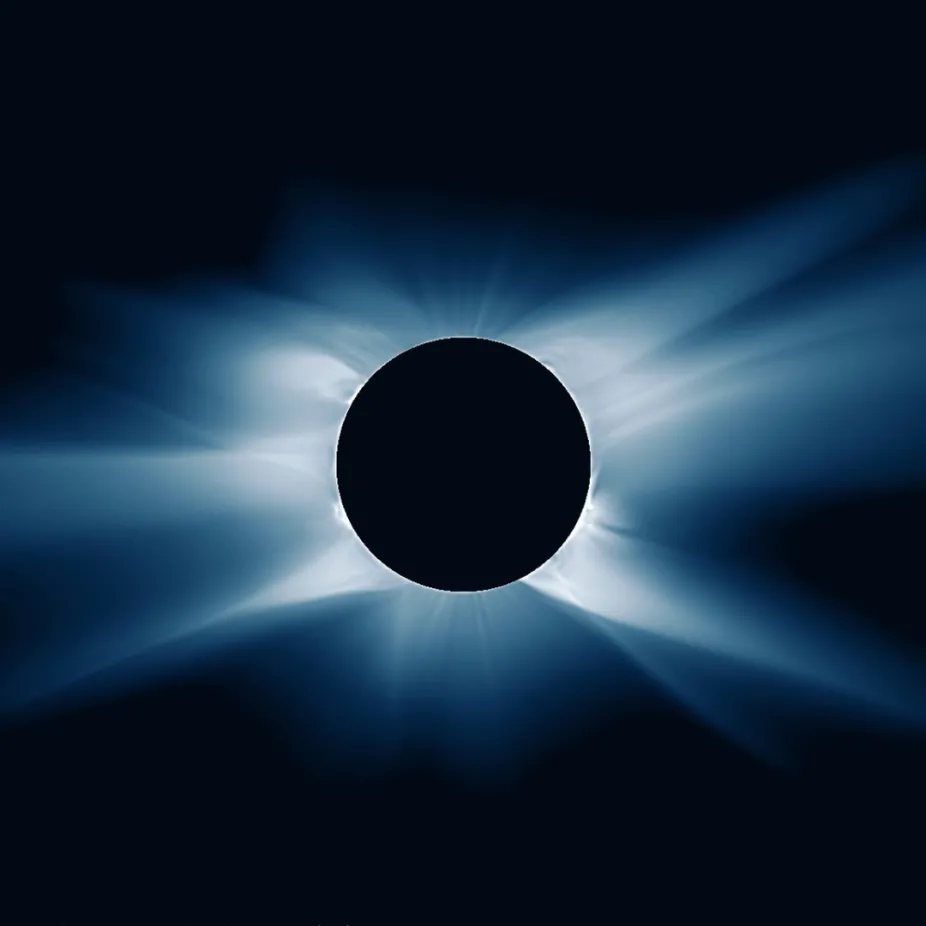
During a solar eclipse (Dec. 14, 2020) the outermost part of the Sun’s atmosphere, called the corona, is visible. The corona sends solar wind made of plasma out in all directions, traveling beyond the boundaries of our solar system.
NASA
Annular Eclipse: The Ring of Fire
The Moon has an elliptical (or oval-shaped) orbit around the Earth, which means that sometimes it’s closer to us, and sometimes it’s farther away. During an annular eclipse, the Moon is farther from Earth, so it appears too small to completely block out the Sun. Instead you will see a bright ring of sunlight shining out from the edges of the Moon.
An annular eclipse isn’t safe to view without special solar filters because the Sun is not completely blocked. Never look directly at the Sun except during a total solar eclipse when the Moon completely shadows the Sun.
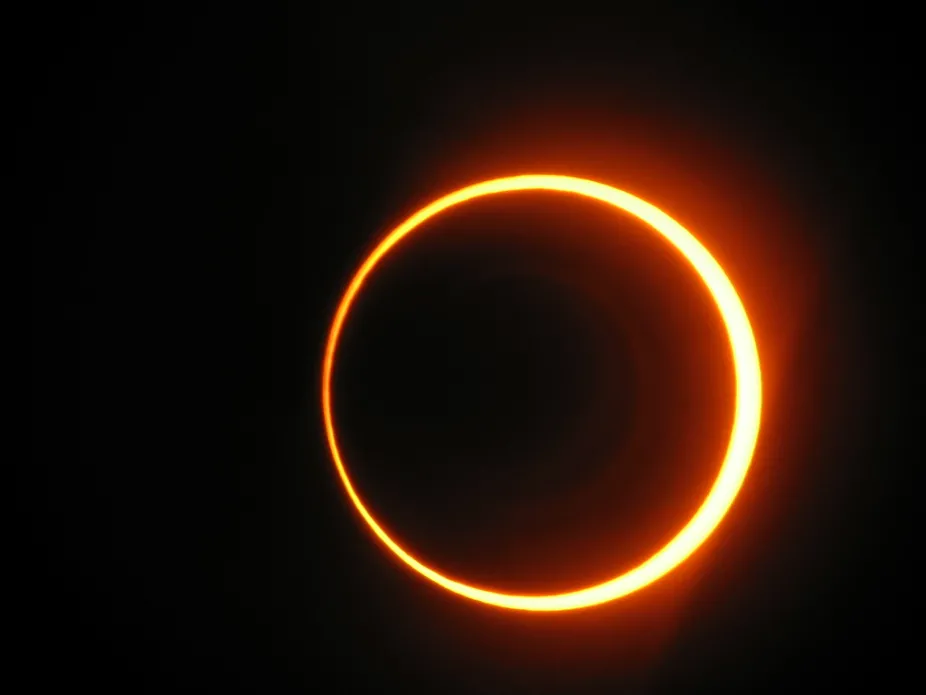
An annular eclipse, sometimes called the ring of fire, appears as a bright ring of sunlight around the Moon. Because the Moon is a bit farther away from the Earth during an annular eclipse, it appears smaller in the sky and isn’t able to completely block out the Sun.
sancho_panza, CC BY 2.0, via Wikimedia Commons
Hybrid Eclipse
The rare hybrid eclipse changes from annular to total and then back to annular as it moves across the Earth. Because the Earth is curved, we view an eclipse from different angles depending on our location. During a hybrid eclipse, the alignment of Sun, Moon, and Earth is such that different locations along the eclipse path experience the eclipse as a total eclipse or as an annular eclipse. The angle of the Moon's shadow during a hybrid eclipse is barely low enough to brush across the surface of the Earth, which results in an extremely narrow eclipse path and a very brief period of totality. During the April 20, 2023 hybrid eclipse totality lasted for barely over one minute.
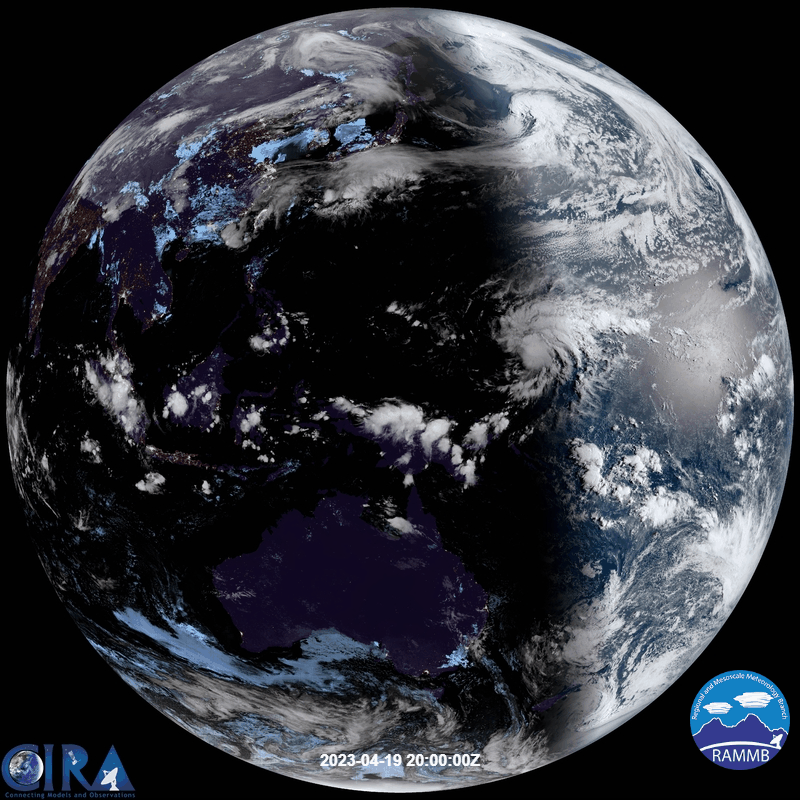
The April 20, 2023, hybrid eclipse looks like a dark patch moving from the lower left side of the Earth towards the right, passing over Australia, in this animated satellite image.
Japan Meteorological Agency, Wikimedia Commons
Learning About the Earth During Solar Eclipses
When there is a solar eclipse, you can bet researchers are studying it. In addition to studying the eclipse itself, a solar eclipse provides a rare opportunity to observe aspects of the Sun’s corona that are difficult to see otherwise, even with the use of specialized instruments called coronagraphs. Scientists study the corona to learn how energy is transferred from the Sun to the Earth through the solar wind.

The NSF/NCAR Gulfstream-V research aircraft helps scientists study solar eclipses from the sky.
UCAR
Research aircraft, such as the NSF/NCAR Gulfstream-V, are flown to observe the corona and take measurements in the atmosphere during a solar eclipse. By flying along with the eclipse, researchers can stay in the shadow longer and collect more data. Flying above air pollution and clouds also provides a clearer view of the corona during a solar eclipse, something you can’t count on when you are observing from the ground.
In addition to learning about the Sun, some scientists study solar eclipses to better understand Earth’s energy budget. The Moon’s shadow disrupts the amount of solar energy that reaches the ground, just like some clouds do. Measurements taken during a solar eclipse, when there are changes to only the portion of the atmosphere that is within the path of an eclipse, can help us better understand how Earth responds to solar energy differences. This data can help to improve computer models that simulate our Earth system.
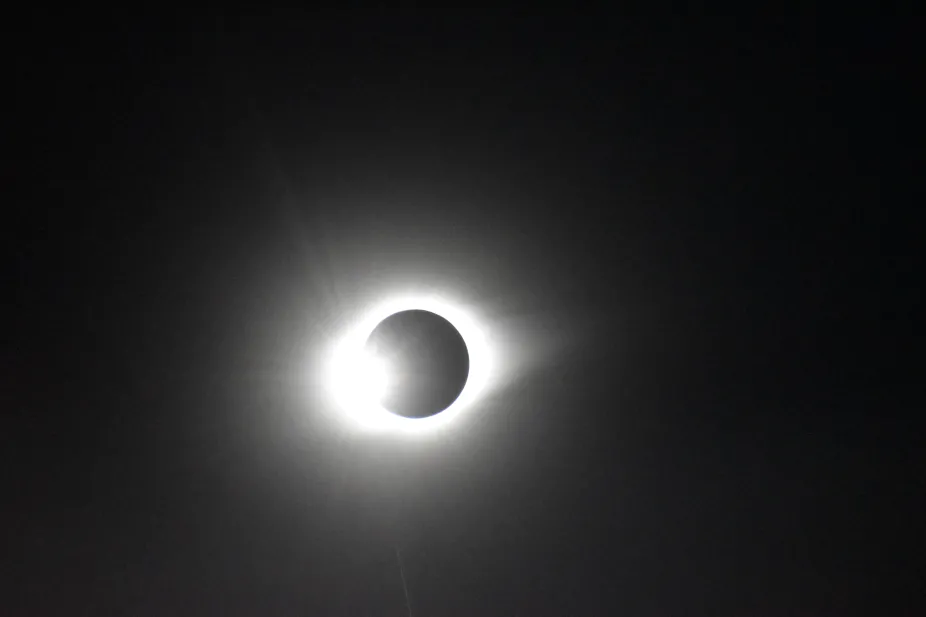
This image of the July 2, 2019, solar eclipse was captured from aboard the NSF/NCAR Gulfstream-V research aircraft.
J Cowan/NCAR